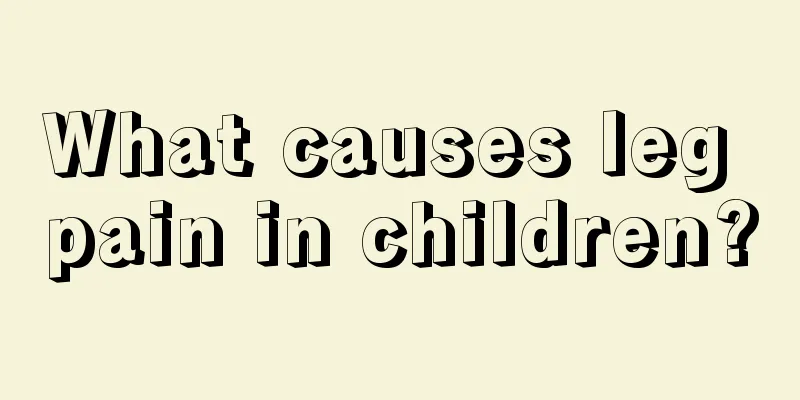What causes leg pain in children?

|
Every child must experience growing pains when they reach the growth and development stage. The symptoms of growing pains mainly occur in the limbs, causing soreness and pain in the limbs at night. Generally, some children have slightly stronger physiques, and the growing pains are relatively mild and cannot be felt, but they are generally caused by growing pains. The child's legs often hurt at night. Is this growing pains? It is possible. Such occasional dull pain is very common in children. Growing pains are more common in two stages of childhood, between 3 and 5 years old and between 8 and 12 years old. The pain is usually felt in the legs, especially the thighs, then the knees and calves. The pain often occurs in the afternoon and evening, and in the first few hours after bedtime. Is it really painful? Growing pains, the name of this disease is somewhat deceptive. Although experts are unsure of the exact cause of the pain, there is no evidence so far that it is caused by bone growth. Pain often seems to occur after your child exercises, but this doesn't mean your child has made any mistakes or overexerted himself during the exercise. He may just need to slow down or reduce the intensity. Almost every healthy child experiences growing pains. In fact, this happens to 25 to 40 percent of children. Some researchers have found that when children who experienced growing pains were compared with those who did not experience them, children who experienced growing pains tended to be heavier. Children are very sensitive to changes in their bodies, but they may not understand why. Sometimes, growing pains can be a sign that some serious physical changes are about to happen. So, when your child has some unexplained pain, be sure to take him to see a doctor. Ruling out other diseases is key. When doctors determine whether such pain is growing pain, it depends largely on making sure that there are no other causes of the pain. Leg pain may be caused by other syndromes, such as bone infection, fracture (fracture), osteoma, leukemia, juvenile rheumatoid arthritis, or other joint problems. How painful are growing pains? Growing pains have their own characteristics, which distinguish them from some other diseases. Growing pains usually last only 10 to 15 minutes before going away and usually affect both sides of the body (similar sides), although the pain does not necessarily occur at the same time. The pain is usually felt deep in the muscle rather than in the joint. Growing pains are not a cause of fever, chills, congestion, swelling, lameness, or joint pain. How to deal with growing pains Growing pains cannot be prevented, but you can relieve your child's discomfort, such as warm compresses, massage, and the proper use of antipyretic and analgesic drugs. Remember, if your child's pain is severe, be sure to see a doctor to make sure there is no other serious illness present. Pain Tips The following symptoms may indicate a more serious problem: The pain comes from a specific location and is severe enough to wake your child at night. |
<<: How to judge whether the baby's eyes are normal
>>: What is the reason for heavy hair in babies?
Recommend
What are the hazards of newborn shaping pillows?
The newborn shaping pillow is a common baby-speci...
What should I do if my baby has green stools during the confinement period?
After giving birth, the mother may not take good ...
How to care for allergic rash in children?
Children have fragile bodies, poor immunity, and ...
What to do if your child's genitals itch
When children are young, all hygiene issues are t...
How to correct children's stuttering
Speaking of stuttering, I believe everyone is fam...
What should I do if my two-year-old baby has a long foreskin?
The foreskin is a layer of skin wrapped around th...
What is the reason for children's yellow urine
Many people may ignore the color of their urine a...
What is the cause of the child's low-grade fever for several days?
In the pediatric outpatient clinic, the most comm...
What is the reason for a six-month-old baby to sweat?
Six-month-old babies sweating makes many new moth...
Is there any evidence that premature babies are smart?
There is a rumor among the people that premature ...
The child sweats a lot
Children's physical health can be easily affe...
What are the reasons for children's picky eating?
Children are the lifeblood of the family, but man...
What to do with femoral head necrosis in children
What should we do with femoral head necrosis in c...
How to treat eczema in children? There are some tricks to get rid of eczema
Eczema is a common allergic, non-infectious, alle...
Children who eat too much meat are prone to spleen yin deficiency
Traditional Chinese medicine believes that the sp...









